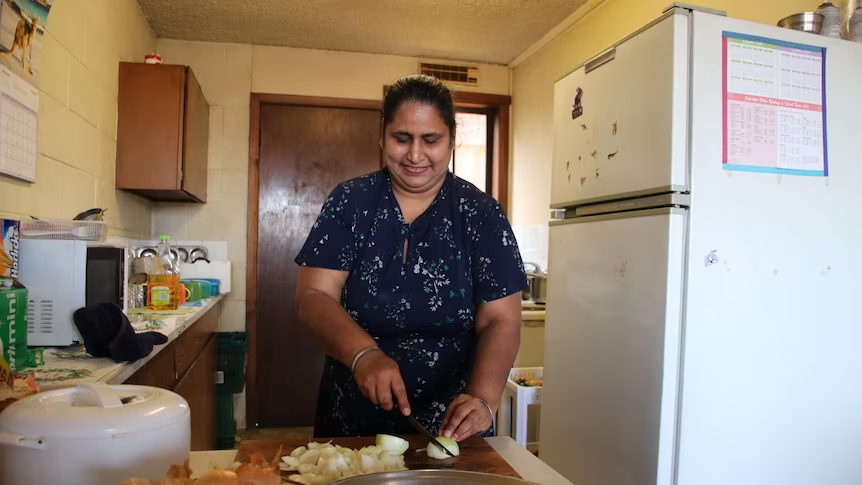
Read more
Blog, Public Attitudes
The contradictions in Hungary’s immigration policy and communication
In his recent speech, Hungarian Prime Minister Viktor Orbán declared, “By 2035, Hungary must be demographically self-sustaining. There can be no question of population decline being compensated by migration. The Western experience is that...
In 2017, having already migrated to Australia on a short-term visa, Inderjit applied for a chef’s position and was promised a sponsored visa by her employer. However, she was required to work unpaid for the seven months it took for her visa to be processed. After her visa was approved, her employer demanded that she pay for it. Upon refusing, she was fired, leaving her with only 60 days to find a new sponsor or have her visa cancelled, a daunting task given the lengthy bureaucratic process of transitioning to a new sponsor.
The precarious situation faced by workers like Inerjit is chillingly common and not unique to Australia. At its heart, Inderjit’s situation and that of many other migrants, is the practice of ‘tied sponsorship,’ which remains the default setting of most temporary labour migration programmes, especially those aimed at low- and mid-skilled workers.
While it offers a level of security for employers and assures voters in destination countries that migrants will fill specific labour gaps, this system binds workers’ visa status to one employer creating a deep power imbalance. With stories of exploitation regularly emerging, could alternatives to single-employer sponsorship offer a path forward for reforming the status quo?
The arguments for and against tied sponsorship
On the one hand, employers laud sponsorship – what motivation would they have to pay for overseas recruitment if the employee could be immediately lost to a competitor who offered higher wages? Policymakers likewise prefer tied sponsorship to ensure that migrant workers fill the specific gaps they were recruited to fill. Some commentators argue that tied sponsorship is especially important for the protection of vulnerable workers, as it allows the State to impose greater obligations on employers and monitor compliance more closely.
On the other hand, in the words of the UN Special Rapporteur on Contemporary Forms of Slavery, tied sponsorship – by creating a power imbalance between worker and employer – creates a ‘breeding ground for contemporary forms of slavery’. The right to change employers, many argue is ‘perhaps the single best thing the government could do to protect workers’ rights’. Has any State found a solution to the dilemma?
Current global responses to worker exploitation
Emergency exit
The concept of ‘exit’ has long been proposed as a way to protect workers. In his 1970 book, “Exit, Voice, and Loyalty” economist Albert Hirschmann describes the actions that individuals or groups might take when they are unhappy with an organisation or situation. In relation to migration, “exit” might be interpreted as migrants leaving exploitative employers without the risk of retaliation or restrictive measures. “Voice” enables migrants to report abuses, seek redress, and advocate for better conditions without the fear of deportation or losing their job. These mechanisms work together to help prevent exploitation and promote fair working conditions, ensuring a balance of power between employers and employees. In its simplest form, ‘exit’ is now technically available in almost all tied sponsorship systems – a worker can usually leave their employer if they return to their country of origin, or if they can definitively prove that they were victims of exploitation – but this can be impossible in practice.
A band aid fix?
Most countries with employer-sponsored regimes have only offered band-aid solutions. After a a damning report by UK immigration watchdog found that the government had left thousands of migrant care workers vulnerable to exploitation under their sponsors, the government introduced a £15 million ‘international recruitment fund’ to fund proposals to help move exploited workers onto new sponsors – but did nothing to address the employer-sponsored model that was the root cause of the problem.
Similarly in Australia, reforms have made a deeper attempt to address the lack of ‘exit’, but so far left the employer-sponsored model intact. From July 2024, employer-sponsored skilled migrants can leave their current sponsor and have 6 months during which they can be without a sponsor. Crucially, during this 6 months, they can work for any employer – with no sectoral, geographic or other bureaucratic restrictions. This compares favourably with other countries – a major challenge for exploited workers in the UK is that 60 days is simply not enough to transition to a new sponsor. The comparable period in Sweden is 90 days. A major challenge, however, is that the exact ‘grace period’ is irrelevant if there are no unrestricted work rights – a migrant will be unlikely to remain in the country if they cannot make an income while they search for a new sponsor (for example, in Canada, migrants who leave their sponsor do not lose their residence permit, but it’s cold comfort as they don’t have the right to work until they find a new sponsor).
What is the future of tied sponsorship?
Sectoral visas allow migrant workers to work for any (and multiple) employers in a sector facing shortages and not remain tied to a single sponsor. They offer significant advantages over employer sponsorship:
- The flexibility to move between jobs within the same industry makes it easier to leave an unsuitable or exploitative position without jeopardising their visa status;
- The flexibility to move empowers workers, enhances their bargaining power, and reduces the potential for employer abuses that can arise from the fear of losing sponsorship;
- The skills and experience the worker gains are retained within the industry; and
- There is better alignment of labour supply with industry demand, as workers can move to where they are most needed within the sector, enhancing overall productivity and economic stability.
Critics argue that sectoral visas are not a panacea and encompass their own challenges – workers can still be exploited because of poor pay and working conditions that are entrenched in migrant-dominant sectors. But they are a vast improvement on employer-sponsored visas.
There is little policy analysis on how sectoral visas might work in practice, though the concept has often been proposed in policy debates. A recommendation from a multi-year study of the horticultural sector by Adelaide University and Sydney University was that industry should be “responsible for applying for visas and organising accommodation, transport and pastoral care across a range of [employers]” and together with government and unions should be responsible for monitoring compliance with employment protections. Other examples – also from Australia – include labour industry agreements, that have been signed between employers and sectoral unions in meat processing and elder care, which enable a degree of workplace/sectoral mobility and union oversight.
For now, tied sponsorship largely remains entrenched, but in some countries a change is in the air. A few months ago, a Canadian Senate committee tasked by Parliament to review employer sponsorship, found that the model is detrimental to both workers and employers. The report recommended phasing out employer-specific work permits within three years, in favour of sector-and/or-region-specific work permits where workers have full mobility within that sector or region. Will Canada, and other countries, follow this advice?
—
Sophia Kagan was a Short-Term Visiting Fellow with the Migration Policy Centre in 2024, researching employer-sponsorship in temporary labour migration programmes. She has 12 years background with the UN International Labour Organization in labour migration and is now the Principal Policy Adviser on labour migration with the Office of the NSW Anti-Slavery Commissioner in Australia, where she co-authored the report Be Our Guests: Addressing urgent modern slavery risks for temporary migrant workers in regional and rural New South Wales.

